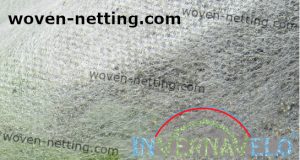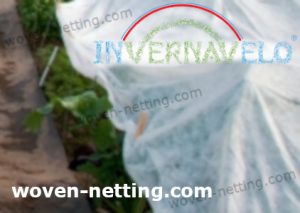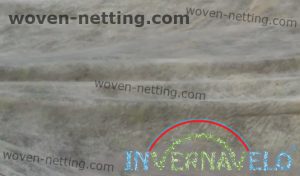With the large variety in woven netting, getting the right type for your specific garden needs can be a bit confusing. Some of the considerations you will have to make include whether to get woven non-woven netting, which is mostly made of polypropylene or to get simple woven netting made using artificial components.

Woven netting can be used for protection against birds and insects, including butterflies, caterpillars, carrot fly, flea beetle, aphids, blackfly, and whitefly. The ideal type of netting for insect protection is the woven non-woven netting. This type of netting can be placed directly over a cage structure or over crops. It can also work as a shed netting, although it should be permeable enough to allow for free water and air passage. The woven insect netting can also be used as protection against frost, rotting resistant, mildew and UV rays.
Woven Non-Woven Netting Used As Fabric Bird Netting
Bird netting is amongst the most popular bird barriers for gardens today. Woven non-woven netting is a durable, effective tool for controlling a lot of bird species. They are also highly durable, long-lasting and cost-effective. A lot of people prefer modern bird netting structures that are made of polyethylene, a durable plastic material. Bird netting is most effective when used as a physical barrier to keep birds away from specific areas.
Importance of Woven-Non Woven Netting for Bird Control

Birds like ravens and grackles are capable of inundating trees and other plants. From there, they can excrete a considerable amount of waste; a combination of uric acid and other droppings which can be irritating. Uric acid and bird excrement can corrode paint, metals and other material aside from causing expensive repairs.
The most important function for effective bird control using bird netting is to prevent pest birds from roosting. Because of this, certain woven non-woven netting can be categorized as “roost inhibitor,” which is a type of products used for bird control.
Pest birds can also pose a considerable safety risk to the health and fitness for homes. They are responsible for distributing sixty recognized diseases. Feral pigeons and Sparrows can transport harmful bacteria that can cause salmonella poisoning. Bird pests, therefore, can damage a home or a property, textiles in the industrial environment and food items. Feral pigeons also transfer orthosis, which can be equated to viral pneumonia. In addition to these, birds and their droppings together with their nesting materials are hosts of different types of mites and insects.
Bird excrement in the form of aerated dust can also contribute to several health diseases. When the bird droppings are moist, they can cause slip-and-fall accidents on smooth factory floor surfaces. Investing in woven non-woven netting in any industry can be beneficial as a restraining entry of pest birds, and securing your health and your property. Even landing docks are in danger of stray birds, which can harm and deface merchandise on shelves.
Popular Types of Woven Non-Woven Netting Used As Bird Netting
The most common woven netting is the 2-inch and 1-1/8 inch nets that are mostly used for blackbirds and small birds. There is also the ¾ inch for deterring sparrows and swallows, and the 4-inch for keeping off gulls. Bird netting also comes in different colors and weights, including stone, translucent and black. The ideal woven netting for your garden should be able to visually blend in your environment.

The woven non-woven netting is another form of bird netting. This is made of polypropylene extrude plastic type netting that is UV protected. This type of bird netting is superior and offers the ultimate protection for a long period of time. There are also distinctive forms of bird netting, including rot-proof netting, UV stabilized, water-resistant netting and fire-resistant netting. Some heavy-duty, bird-proof woven non-woven netting are also sub-zero stable.
The polypropylene used in making woven non-woven netting is a tough plastic that is quite liable. It can, however, be difficult to use this as trellis netting due to its heavy weight. With proper installation, this type of bird netting can be made invisible. There are also some variations of it that have been designed for extreme temperatures. It is therefore designed to economically and efficiently prevent birds from the access of certain openings, structures, and objects.
The weighty polyethylene type bird netting is mostly made using a UV stable fine mesh that can be purchased in numerous standard sizing or made to order cuts. The most popular sizes are 50’ X 50’, 25’ X 25’ and 10’ X 10’ most of which can become as 3/8” mesh. This is one of the most effective forms of bird control; you can almost never go wrong with it. Plastic bird netting however is not a long-term netting product and can last only for a year.

When it comes to your crop, it is wise to take every possible measure to protect your harvest. Investing in a quality woven non-woven netting can prevent you from losing your investment by keeping away pest birds that can destroy your crop before it has fully matured for harvesting.
Even people who don’t have commercial or home gardens can invest in bird netting, since it can act as protection for the home or commercial building against bothersome birds. As mentioned earlier, birds can cause a lot of harm, including disease transmission, increased risk of slip-and-fall accidents, increasing the cost of cleaning up, among others.